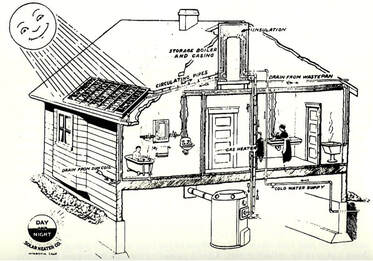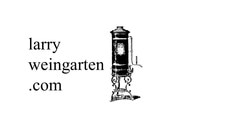 Although I don’t go as far back with solar water heating as Day and Night Solar, I am one of the old guys in the field having built my first system in 1978. I installed new solar right up to the end of tax credits in 1986. Then 90% of the solar companies in my area vanished and I took on keeping all those local orphan systems running. What I saw taught me a lot about how not to do solar. People had installed copper coils in galvanized tanks. This caused the tanks to leak within a year or two. Some installed the solar tank downstream of the electric “backup” tank, so electric was heating the solar tanks. Just imagine that meter spinning! Drainback systems were put in so they couldn’t really drain back, and pipes froze. The wrong insulation was used and would melt off the pipes, or no insulation was used at all, or was sloppily installed, so it didn’t really work. Pumps would come on during freezing weather, so pipes that would have been fine, burst because of controls poorly set up……… I saw systems so complex that it took a longish time to figure out what the installer might have had in mind. Systems like these reminded me of being inside of an older style diesel submarine with pipes running everywhere. Perhaps the installers were proud of these systems because it was common that they had no insulation… probably to show off all the shiny copper piping! If you’re going to have a system like that, you need to build a separate bedroom for the installer as he or she will be spending a LOT of time at your place. At least put a cot in the mechanical room! So, I got to learn a few things. First is Elegant Simplicity. This matters because the more complex something is, the more ways it has to misbehave. Just think of the interactions between parts. If there were only two parts, that’s two interaction. Three parts means six interactions. Four parts means twelve interactions, and so on. Keeping things simple, by actually putting the properties of the materials to use, is a great way to build a durable system. The only problem is that it requires thoughtful design. I had the pleasure of working with Steve Baer, of Zomeworks in New Mexico. He was a champion for the practical application of elegant simplicity, and he wrote a lot of good things too. The book: “Sunspots” is likely his best-known work. If you want durable and efficient systems, elegant simplicity is THE way to go. It’s also useful to study the history of solar, so that you understand the ideas that have come before. See if you can find a copy of “A Golden Thread: 2500 Years of Solar Architecture and Technology”. It’s a fun and useful read! It also makes sense to design systems that are a good match for the people living there. A very complex system might be fine for the plumber or engineer who likes to tinker, but not so good for the busy professional who works primarily with their mind, rather than their hands. I learned that most people ignore maintenance, so it becomes important to design systems that may only need to be seriously looked at about every five years. That’s hard to do. Also, they need to be designed to fail in a safe way, rather than failing so water leaks out or steam from stagnant collectors fills the garage! One of the most common systems around the world is the thermosyphon type. It places the storage tank above the collectors so warmed water flows by convection from the collectors up into the tank. Having no controls or pump to fail is simpler! Even so, that type of system doesn’t do well in cold climates, but there is no need to have only one system type to cover all areas. There might be places where photovoltaics should power a heat pump, just because any outdoor plumbing is risky. Leaving the past for a bit, I’ve more recently built systems that come pretty close to being simple and perform far better than conventional solar, along with costing about half as much. The key to doing this is to not look for the most efficient collector, but rather, an inefficient collector! By having more square feet of inefficient collector area, you get more BTUs and eliminate the risks and design challenges of overheating. By using the right type of plastic collector, you nearly eliminate the risk of freeze damage. Also, the collectors cost less and are even something that a handy person could make themselves. Add to this, using a well-insulated plastic storage tank and “too much” insulation on the lines allows this system to take care of 90% of the user’s hot water needs! Also, there is very little to maintain. Not bad! A normal “good” system can do 70 or 75% and many do far less. Throw in a little efficiency in the plumbing distribution and fixtures and you will be able to take long, luxurious showers and still be efficient! I’ve only skimmed over the topics of history, design, and efficiency. Still, I hope you understand now that solar thermal can be done well and cost effectively. It does not need to be relegated to the dust bin of history. But, it must be done thoughtfully to work well, long term. Yours, Larry
0 Comments
Leave a Reply. |
Larry Weingarten
Looking back over my working life of 50+ years, it seems clear that self sufficiency has always been the best way for me to be useful. Now, mix in a strong interest in water in its many forms and the wide world of animals and you'll know what's important to me. Archives
January 2023
Categories |
Copyright © 2014 - 2023
All Rights Reserved
All Rights Reserved



 RSS Feed
RSS Feed